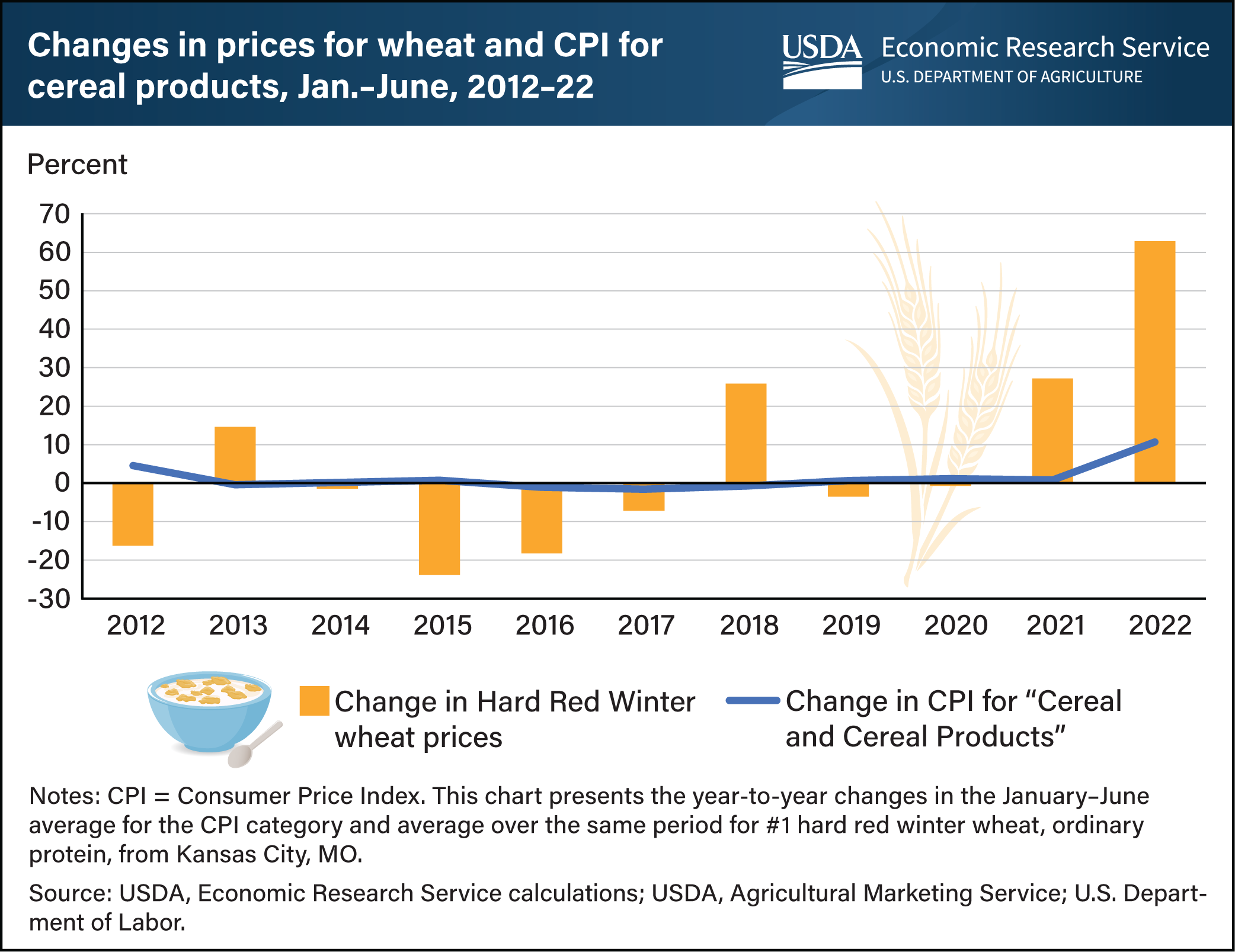Consumer prices for cereal products rose 11 percent in first 6 months of 2022
- by Andrew Sowell
- 7/20/2022

Consumer prices for cereal products as measured through the Consumer Price Index (CPI)—a widely used measure of inflation—rose about 11 percent during the January–June 2022 period from the same period in 2021. This marked the largest year-over-year increase in this 6-month period since 1981. The rise in consumer prices for cereal products tracks a more substantial increase in wheat prices. Cash wheat prices in Kansas City, MO—the market price that most closely reflects the prices mills pay for wheat—were up 63 percent from the same period in the previous year. This heightened volatility follows a historically typical pattern. Price changes in commodity markets tend to be relatively more extreme than the changes in consumer prices. Generally, commodity prices make up a small portion of the value of these cereal products because of the level of transformation and transportation that the products undergo through the value chain. Further, changes in consumer prices may lag behind commodity price movements based on the tendency of processors to contractually commit to purchases of inputs several months in advance. Additional factors such as the high price of other ingredients as well as elevated labor and fuel costs are driving the prices of cereal products upward. This chart was drawn from the USDA, Economic Research Service’s (ERS) June 2022 Wheat Outlook. See also the ERS Chart of Note, Wheat and wheat flour prices surge, while prices remain stable for bread, cereal, and bakery products.


